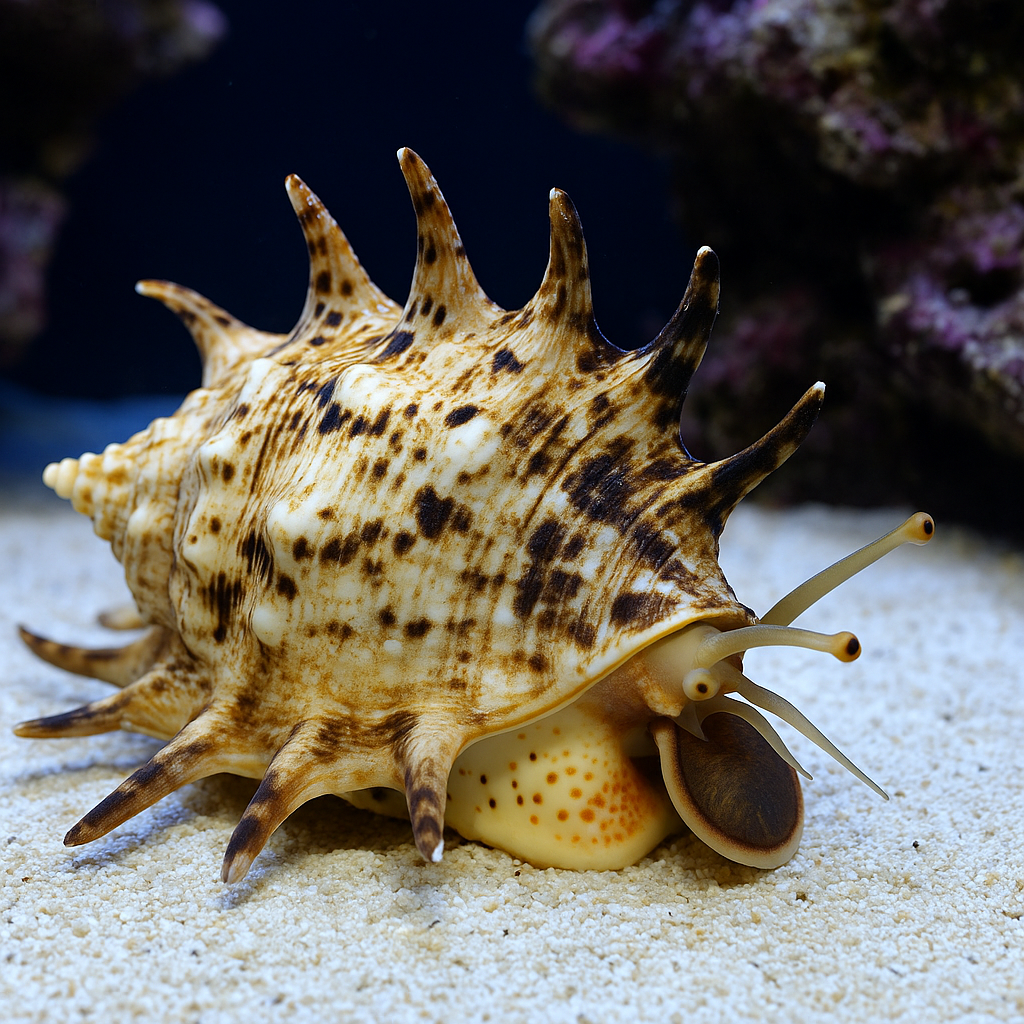🐌 Spider Conch Snail (Lambis spp.) – Reef Aquarium Guide
Overview
The Spider Conch Snail is a striking, reef-safe grazer known for its unique shell with long spiky extensions. Native to the Indo-Pacific, these snails are prized not only for their unusual appearance but also for their usefulness in cleaning sandbeds and live rock.
-
Scientific name: Lambis spp. (often Lambis lambis)
-
Common names: Spider Conch, Spider Shell Snail
-
Category: Marine Invertebrate
-
Care level: Easy to Moderate
-
Temperament: Peaceful, reef-safe
Appearance
-
Large, heavy shell with 6–10 long “spider-leg” projections.
-
Natural shell colors range from creamy white to tan with darker streaks.
-
The soft body has a long, muscular foot and a trunk-like proboscis for feeding.
These snails can grow quite large, often reaching 6–10 inches in shell length when fully mature, making them a true showpiece in any reef tank.
Role in the Reef Tank
Spider Conch Snails are excellent sand sifters and detritus eaters. They help keep your substrate clean by consuming:
-
Algae film
-
Detritus buildup
-
Uneaten food
They are reef safe and will not harm corals, clams, or fish.
Tank Requirements
-
Tank size: 100 gallons or larger (due to their size and activity).
-
Substrate: A sandy bottom is essential, as they like to dig and forage.
-
Diet: Primarily detritus, film algae, and leftover food. In clean tanks, you may need to supplement with dried seaweed (nori) or sinking herbivore pellets.
-
Compatibility: Peaceful; safe with corals, inverts, and fish. Avoid housing them with predatory crabs, triggers, or puffers that may damage their shell or soft body.
Behavior
-
Very active during the day, often moving across the sandbed.
-
Uses its long proboscis to probe into crevices for food.
-
The large operculum (trap-door “foot plate”) helps protect it when threatened.
|









